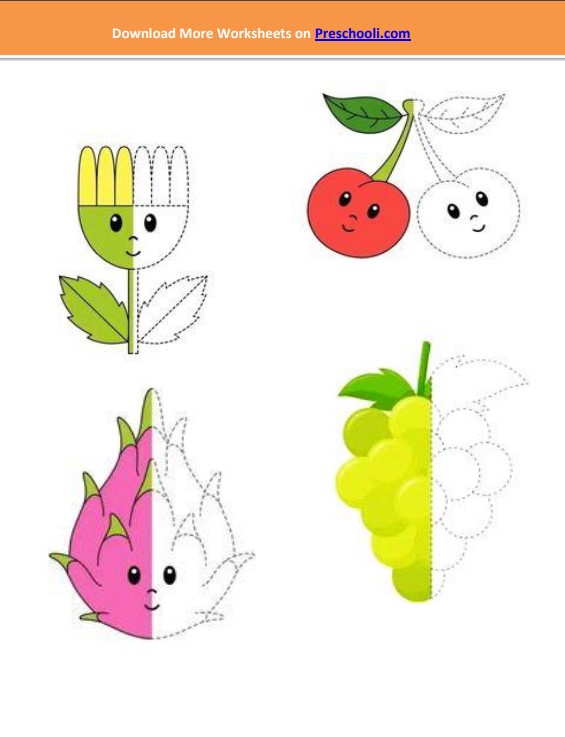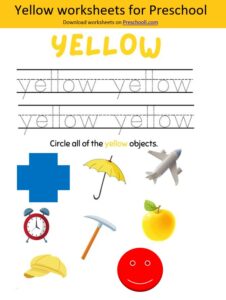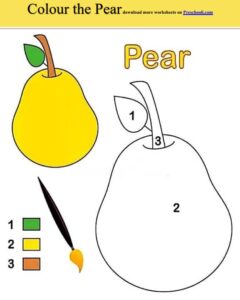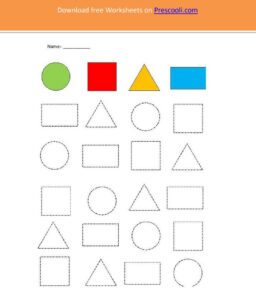Fun Learning with Multiplication Coloring Worksheets for Preschoolers
Engaging children in math at an early age can set the foundation for a lifetime appreciation of numbers and the beauty of patterns and logic. Multiplication coloring worksheets are an enriching way to introduce young learners to basic multiplication concepts while keeping them captivated with coloring activities. In this post, we explore the importance of early math education, the benefits of incorporating coloring into this learning, and how educators and parents can make the most of these resources.
Why Early Multiplication Education Matters
Introducing multiplication at a preschool level might sound ambitious, but it’s a tremendous opportunity for children to build a strong numerical grounding. Early math concepts support various cognitive functions, aid in problem-solving, and develop logical thinking skills. As multiplication is simply a form of repetitive addition, children as young as three can grasp the basic concept through visual and creative learning methods.
The Foundations of Multiplication for Preschoolers
At its heart, multiplication is about grouping objects or representing a number of sets with the same amount of objects in each one. For a child, it’s the beginning of understanding that numbers can be manipulated and represented in different ways. With the use of fun coloring activities, children can visually see how numbers ‘grow’ as they’re multiplied, which helps solidify the abstract notion of multiplication.
Creating a Positive Mindset Towards Math
Coloring worksheets that introduce multiplication in a playful way can encourage a positive attitude towards mathematics. By associating math with fun activities, children are less likely to develop math anxiety and more likely to see math as an approachable and enjoyable challenge.
The Hidden Power of Coloring Activities
Coloring is not just a pastime; it’s a powerful educational tool that engages multiple learning pathways in the brain. Here’s why these activities pack a punch when it comes to early math education.
Strengthening Fine Motor Skills
The act of coloring itself helps children hone their fine motor skills — the small muscle movements that are crucial for tasks like writing and cutting. These precision movements are imperative for young students as they begin to learn to write numbers and equations, and embark on their academic journey.
Integrating Technicolor into Math Learning
Research has shown that color helps children’s memory retention and enhances understanding. By associating specific colors with numbers or sets, students can create mental maps and visual shortcuts to aid in their multiplication learning. This method is particularly beneficial for visual learners who make up a significant portion of the preschool and early elementary school population.
Embracing Cross-Curricular Connection
Coloring activities can facilitate a connection between different subject areas. For instance, using a color code for literacy and numeracy — such as vowels or prime numbers — can create an environment where students naturally make connections between different disciplines, fostering a holistic approach to learning.
Crafting Effective Multiplication Coloring Worksheets
When designing or choosing multiplication coloring worksheets, it’s essential to keep the following strategies in mind to create an effective and enjoyable learning experience.
Balance Complexity with Comprehensibility
The level of difficulty should be approachable while still providing a challenge. For preschoolers, this might mean focusing on smaller multiplication tables (0-5) and using clear and simple images that are easy to color and count.
Align with Learning Objectives
Coloring worksheets should be directly relevant to the learning objectives. Images that can be divided logically into equal groups or rows can help illustrate the multiplication problem, showing that it’s more than just random addition.
Incorporate Diversity in Designs
Variety is key to keeping young learners interested. Different themes and designs can not only make learning more fun but also expose children to a variety of problem-solving situations, encouraging generalization of the concept.
Encourage Learner Agency
Provide worksheets that allow children to make choices, such as selecting their own colors or deciding the order in which they complete the problems. This encourages ownership of their learning and can increase engagement with the activity.
Include a Reflective Element
After completing a worksheet, consider including a question that prompts children to describe or explain what they’ve colored. This reflective element can help children better articulate their understanding and opens the door for adult-child dialogue about the concepts they’ve explored.
Implementing Multiplication Coloring Worksheets
So, how can you incorporate these colorful tools into your little one’s educational routine? Here are some practical tips for parents and educators.
Making Math Kid-Friendly
Math shouldn’t just be relegated to textbooks and worksheets; it can be part of everyday conversation and play. Parents can introduce multiplication as part of storytelling or playing games that involve counting and grouping.
Coloring Parties Make Learning a Social Experience
Host a ‘coloring party’ where children can complete multiplication coloring worksheets together. This group activity adds an element of fun and competition while also fostering teamwork and social skills.
Technology as a Supplementary Tool
Online resources and apps can complement traditional worksheets. There are numerous interactive color-by-number multiplication options that can be used as a break from the routine or an introduction to the topic through a different medium.
Creating a Routine
Consistency is key to learning at this age. Establish a routine where a new worksheet is introduced on a regular basis — it doesn’t have to be a daily task, but a predictable addition to the week’s activities can be exciting for children.
The Role of Educators and Parents in Early Multiplication
Educators and parents both play pivotal roles in a child’s math journey. Here’s how each can contribute effectively.
Educators: The Architects of Early Learning
By conceptualizing multiplication in innovative and age-appropriate ways, educators can lay the groundwork for a child’s numeracy. Incorporating strategies like story-based math, manipulatives, and engaging visuals alongside coloring worksheets can make the subject come alive in the classroom.
Parents: The First and Forever Teachers
Parents are a child’s first and most enduring teachers. Through simple, everyday experiences, parents have the opportunity to demonstrate and reinforce early math concepts. Multiplication coloring worksheets can be part of a larger toolkit that parents use to support their children’s learning at home.
Putting Theory into Practice: A Multiplication Coloring Worksheets Sample
For a practical understanding of how to use these worksheets, let’s walk through an example activity. Imagine an image of a garden with flowers. Each flower stem has three empty spaces for children to fill in using the multiplication of 2s. As the child colors in the flowers based on the correct multiplication solutions, a vivid and rewarding garden scene is revealed.
In Summary: Multiplication Made Colorful
Introducing multiplication concepts through coloring worksheets is a dynamic and effective strategy to engage preschoolers in math. By weaving together math and creativity, we are not only preparing children for future academic challenges but are also cultivating an early love for numbers and the joy of discovery within them. Embrace the colors, embrace the math, and watch as young learners bloom into confident, capable mathematicians.
As you venture into this exciting way of teaching, remember that the journey of learning is as colorful as the tools we use to navigate it. By valuing the process as much as the outcome, we can ensure that our preschoolers are not just learning to multiply, but learning to love to multiply.
Join our Facebook Group



